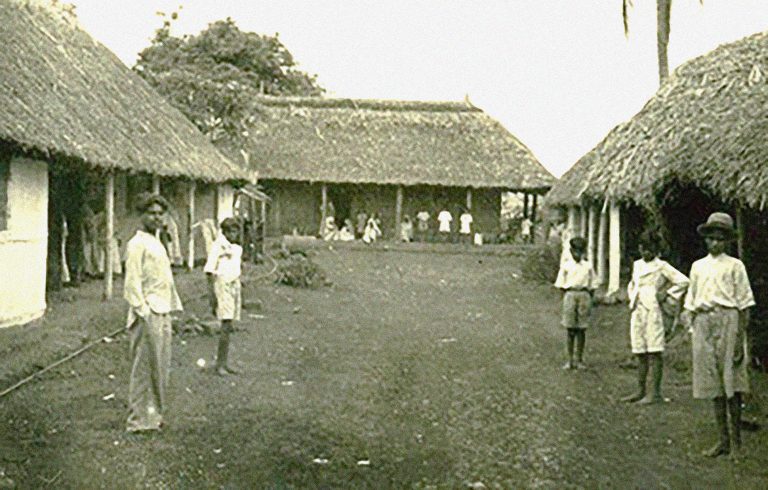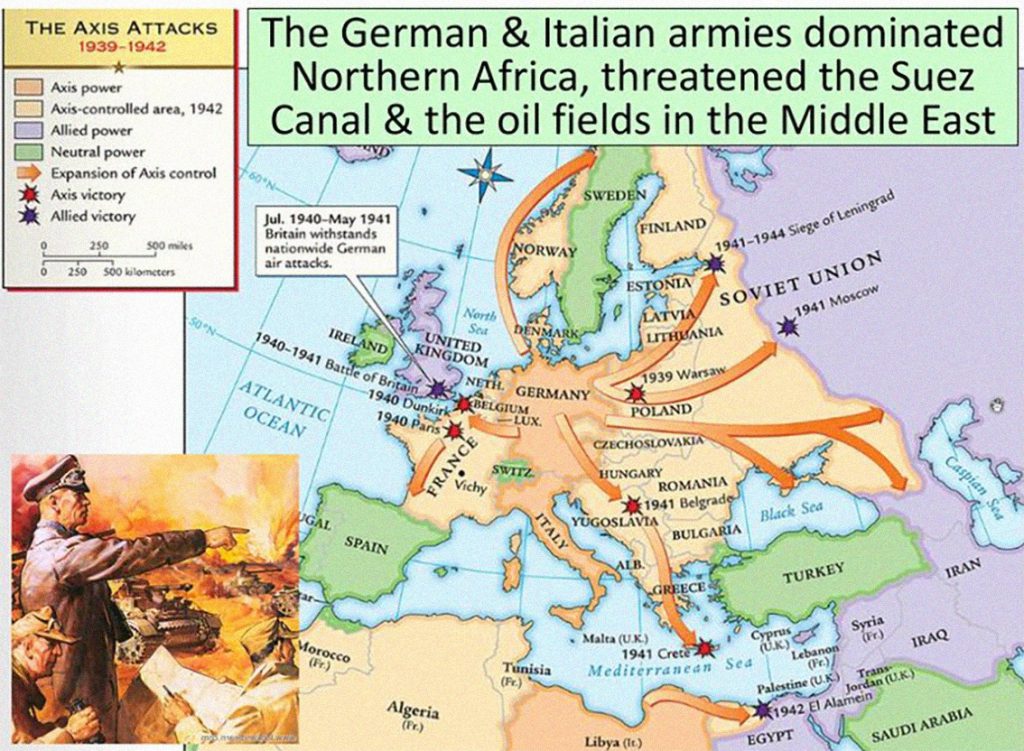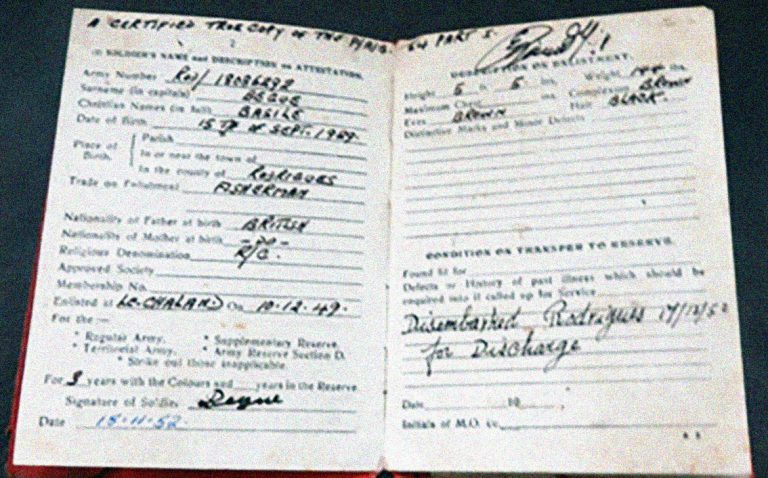Mauritius Prior to World War II
Early 1940’s, Mauritius was characterized by its simple life. The population amounted to around 400,000 inhabitants. The island was vastly covered with green thick forest and the main agricultural backbone was sugar cane followed by tea plants. During these days one could barely see a motor vehicle on the road. Majority of the roads were not asphalted. People used to walk long distances from one place to another. Some could be seen on bicycles and others in oxcarts. Trains were the main public transport. Majority of houses were small and made up of straws, some were made up of wood and shingles and few were in concrete. The illiteracy rate was at its highest though there was a minority of the population — in particular the Franco-Mauritians being of Catholic faith— who was educated. An even smaller proportion of those belonging to other religions had access to education. Men were majorly labourers working in sugar cane plantations or in sugar cane factories and others were fishermen. Young boys helped their dads in sugar cane fields, in rearing animals or in gathering dry woods for cooking from nearby forest while girls stayed at home to help their mothers in daily house activities.
At the outbreak of World War II, many Mauritians volunteered to serve under the British flag in Africa and the Near East, fighting against the German and Italian armies.

Mauritius during World War II
Mauritius become involved in the Second World War in 1942. The two factors which contributed to this are the following:
1. The repercussions of France’s surrender on North Africa
2. Japan’s entry into the war
Since the beginning of the war, North Africa and the Mediterranean region were in a red alert zone because of the important role which Suez Canal played in that region. The Suez Canal — a man-made waterway connecting the Mediterranean Sea to the Indian Ocean via the Red Sea —enabled a more direct route for shipping between Europe and Asia, effectively allowing for passage from the North Atlantic to the Indian Ocean without having to circumnavigate the African continent. Th waterway was vital for international trade and, as a result, had been at the center of conflict since it opened in 1869. Italy possessed a vast African Empire consisting of Eritrea, Italian Somaliland, Libya and Ethiopia. However, Italy was constrained to exert its full mobility in these colonies due to significant British and French presence around these regions.
While the war unfolded elsewhere, the French and British forces took time to reinforce their presence in the region in an event of a conflict with Italy. However, after the invasion of France and the subsequent Franco/Nazi pact, the French army in the North Africa decided to accept the armistice and abandoned all hostilities against Italy and Germany.

The British and Commonwealth forces in Egypt were lef alone to deal with Italian presence in the Mediterranean region, and consequently the British intensified its recruitment efforts. Mauritius was one of the British colonies, and it was involved in the fundraising as per the Imperial war effor that went towards a Spitfire Squadron and the first mobile canteens used during the London Blitz in 1940.
Recruitment of Mauritians during World War II
Since the French forces in North Africa accepted the armistice and abandoned all hostilities against Italy and Germany, the British forces had to reinforce its man power to deal with the Italian presence in the Mediterranean region.
Mauritius was one among the British colonies and subsequently recruitment exercise started. Banners were placed on buildings mentioning that the army was recruiting. The press also actively participated in this recruitment exercise. Joining and serving the British army was a symbol of pride for many Mauritians. For others it was a source of employment and adventure.
The recruitment exercise was a full success and around 35000 Mauritian enlisted themselves at Vacoas and Bell Village centres. The new recruits were paid 89 cents per day, and in case of promotion to the rank of Sergeant they would be paid Rs 2.67. Food, lodging and uniforms were free of charge. Thei families also benefited between 50 cents to Rs1.33 depending on their number of children.
Majority of the Mauritians joined the supporting units of the British Army. They were enlisted as cooks, drivers, store officers, layman, barbers, masons, clerks and tailors. However, other Mauritians were engaged as soldiers. Some were part of the local army while others joined the Royal Air Force and also as secret agents operating in Vichy France.

Mauritian Military Organisation
Mauritians in different Army Corps
Around 35,000 Mauritians served in the following Army Corps which were part of the Eighth Army except for the Mauritius Regiment which was formed mainly for the defence of Island during the WWII. Of the 35,000 Mauritians including 2,000 Rodriguans,12,500 served during the period of 1941 to 1945. During the year 1945, 200 women also joined the Army. Some other 16,500 men served in the Middle East from 1946 to 1955, which was known as the post-war period.
The other 6,000 people who enrolled in the Mauritius Regiment (formed by the amalgamation of the Mauritius Defence Force and the Mauritius Territorial Force) were recruited to defend any potential attack on the part of the enemy on the home front. There were both volunteers and conscripts among the troops. The Special Operations Executives served in a very specific way.
The Royal Pioneer Corps
Some 27,000 Mauritians were enrolled and served in the Royal Pioneer Corps during the WWII and the Post-War period.
The Royal Pioneer Corps was a British Army combatant corps used for light engineering tasks. It was formed in 1939 and amalgamated into the Royal Logistic Corps later on. Pioneer units performed a wide variety of tasks in all theatres of war during the WWII, including stretcher-bearing, handling of all types of stores, laying prefabricated track on beaches, and effecting various logistical operations. Recruitment of Mauritians to serve as pioneers continued during the post-war period and this continued till 1955.
East Africa Command
About 850 Mauritians served in the East Africa Command during the WWII. East Africa Command was formed on 15 Sept. 1941 with its headquarters in Nairobi. Until 1947 it was under the direct control of the Army Council and thereafter it became the responsibility of Middle East Command. The East Africa Command included the following territories: – British Somaliland, the Reserved Areas, Somalia including the Uganda, Kenya, Tanganyika, Nyasaland, Northern Rhodesia, Zanzibar, Mauritius and the Seychelles.
Royal Army Medical Corps
44 Mauritians were posted in the Royal Army Medical Corps during the WWII.
The Royal Army Medical Corps is a specialist corps in the British Army, which provides medical services to all Army personnel and their families, in war and in peace.
During World War Two, technology enabled the Royal Army Medical Corps greater access to mechanised land and air transport, allowing specialists and operating teams to get right to the front-line in an increasingly mobile war.
Many medical personnel were taken prisoner during the war, as they often remained with the wounded. In the Far East, many British and Australian medical personnel were amongst those taken prisoner at the Fall of Singapore in 1941.
Royal Corps of Signals
During the WWII, the corps had over 150,000 members including Mauritians. The Royal Corps of Signals or the Royal Signals is one of the combats supports arms of the British Army. Signals units are among the first into action, providing the battlefield communications and information systems, essential to all operations. Royal Signals units provide the full telecommunications infrastructure for the Army wherever they operate in the world. The Corps has its own engineers, logistics experts and systems operators, to run radio and area networks in the field.
It is responsible for installing, maintaining and operating all types of telecommunications equipment and information systems, providing command support to commanders and their headquarters, and conducting electronic warfare against enemy communications.
Royal Army Service Corps
380 Mauritians served in the Royal Army Service Corps during the WWII. The role of the Royal Army Service Corps in the field falls into two main parts, supply and transport.
Supply embraces the provision of food, petrol and lubricants, fuel and light, hospital supplies and disinfectants.
Transport is concerned with the conveyance of the above supplies, together with ammunition, engineer stores, ordnance stores and post, from railhead, or from base if no railhead exists, to all units of a field force.
In addition, the Royal Army Service Corps units are provided for the carriage of infantry, tanks and heavy bridging equipment. The mechanical transport of medical and certain other units is also operated by the Royal Army Service Corps. To enable these services to be undertaken effectively, the Royal Army Service Corps units are responsible for the provision, repair, and maintenance of their own mechanical transport.
General Transport Companies are allotted to divisions for the transport of ammunition, supplies and petrol. Similar companies are allotted to higher formations and for employment in Line of Communication areas as required.
Personnel of the Royal Army Service Corps is trained to fight as infantry and Royal Army Service Corps units are responsible for their own local defence.
During the WWII, the role of the Royal Army Service Corps companies was to keep the front-line units supplied.
Mauritius Territorial Force/Mauritius Regiment
Mauritius Defence Force
6185 Mauritians served in locally formed regiments during the WWII. The Mauritius Territorial Force comprising coastal artillery and infantry formations was created in 1934. Due to the escalation of the Second World War, the force expanded to comprise two battalions. It was renamed the Mauritius Regiment in 1943. The 1st Battalion with a strength of 1,000 men landed in Diego Suarez, in December 1943 to relieve Imperial Forces who had invaded and seized the island from Vichy France in the 1942 Battle of Madagascar. Shortly after landing the battalion mutinied due to protests at their conditions and the breaking of their guarantee they would not leave Mauritius. There was also a home guard formation, the Mauritius Defence Force of 2,000 men and a naval Coastal Defence Force.
Royal Engineering
Some 800 Mauritians served in the Corps of the Royal Engineering during the WWII.
The Corps of Royal Engineers consisted of several different types of units to provide a range of engineering services for the British Army. Units of the Royal Engineers formed part of Divisional, Corps and Army Troops.
The principal functions of the Divisional Royal Engineers were bridging, demolitions, creation and clearance of obstacles or roadblocks, creation of concrete and semi permanent
defences, development and maintenance of water supplies, and disposal of unexploded bombs. The Field Company was the standard unit of the Royal Engineers within any infantry division during the WWII, with its equivalent in an armoured division being a field squadron. Each infantry division had three Royal Engineers fiel companies on its establishment. Usually, a field company worked with one of the three brigades, hence the reason why there were three field companies in the divisional Royal Engineers. The Royal Engineering was supported by Bricklayers, Carpenters, Joiners, Concreters, Draughtsmen, Electricians, Masons, Painters, Plumbers and Pipefitters
Free French Forces
60 Mauritians served in the Free French Forces during the WWII. The Free French Forces included military and quasi-military organisations operating with other Allied nations, most notably Great Britain. The Free French Forces aligned with General Charles de Gaulle were politically and militarily opposed to the Vichy regime of General Henri Philippe Petain. Following the collapse of the Third Republic in 1940, elements of the French armed forces made their way to Britain to secure areas of North Africa and the Mediterranean.
In the British Royal Air Force, at least seven squadrons were wholly manned by French pilots, aircrew and mechanics. Individual French fliers served in many other British or Commonwealth units. Two French brigades fought under British command in North Africa from 1941 to 1943.
Mauritius Women Volunteer Corps
Some 200 Mauritian women served in the British Army during the WWII. The Mauritian women enrolled in the Mauritius Women Volunteer Corps and served mainly in North Africa alongside other Commonwealth nationalities. Prior to their departure overseas, they were provided with some training in Mauritius. Once posted in their respective companies, these women were called upon to perform office works like typists, clerks and store women. Some were responsible for the packaging of spare parts for the Royal Air Force and other units of the Army.
Conscription
Conscription was a reality that many Mauritians had had to face during World War II. Indeed, the Compulsory Service Order of November 1941 entrusted the Governor of Mauritius, as in other colonies, the power to conscript civilian labour. As a result, the Mauritius Civil Labour Corps was created to provide labour for defensive works, required by the Royal Air Force and the Royal Navy. The Corps was also created as a means to regulate the labour supply and to ensure that military subsistence and export agricultural requirements were met. In 1942, there were 611 local troops serving in the Mauritius Territorial Force before its expansion in 1943. Out of the 611 troops, 321 were conscripts and the other 291 were volunteers. In the Artillery, there were 111 imperial and 72 local troops amidst whom were 31 conscripts. Conscripts were also posted in Diego Garcia and Rodrigues.
The emotional departure
19 August 1940, the first contingent is set to leave Mauritius on board the Tin – How. With a sense of pride, parading along the streets of Port Louis, with acclamation of thousands of crowd, the Mauritian heroes moved towards the harbour for a new adventure.
Barely 19 years old, still very young and proud with their khaki uniforms, it was a necessity for some to join the army to support their families financially and for others it was a new adventure regardless of what their fate would be during the world war. For some, it was a last journey where they would not return home, and for others a wonderful experience full of memories.
It was a heartbreaking departure with close ones hugging the young soldiers prior to embarkation in the Tin- How. The journey to Egypt was not pleasant at all. The veterans had to face unbearable temperature of around 35 degrees celsius and many of them had seasickness malaise and suffocation was quite common. The food served daily were potatoes and snoek fish.
At night, the veterans gathered in small groups to sing or to tell their histories until they fell asleep. After 4 to 5 days, they reached Durban. From there, a large convoy, of about 300 Allied vessels, headed for Egypt and most of the veterans disembarked at Port Taufiq.
Name: TALAMBA
Type: Passenger Cargo Ship
Launched: 16/07/1924
Completed: 02/10/1924
Builder: Hawthorn Leslie & Co Ltd
Dimensions: 8018grt, 3844nrt, 450.8 x 60.3 x 29.7f
Engines: 2 x Q4cyl (25, 42.5, 51 & 51 x 51ins), 1376nhp
Engines by: Hawthorn Leslie & Co Ltd
Propulsion: 2 x Screws, 16.0knots
Construction: Steel
Reg Number: 147734
History: 02/10/1924 – British India Steam Navigation Co Ltd, London
10/07/1943 – Sank

Mauritian soldiers in the war campaigns
During the war campaigns, most Mauritians were posted to Egypt and Libya while some also moved to Jordan and Palestine. The were enrolled in different Coy (Company) such as 2037, 2039, 2044, 2057 and 2061. They were trained for around 3 months at differen camps such as the Quassassin, Cabrit and Tel-el-Kebir (Egypt). Th training comprised of morning drill, physical training, shooting and crawling exercises with full kit bag on their backs and also they had to bear the extreme heat prevailing in the desert.
After successful completion of training , the veterans were posted in different regions such as Fanara, Abu Sultan, Moascar in Egypt and also in Palestine such as Beit Nabala, Nuseirat and Nesher. Some even embarked for Italy. They worked at Taranto, Gessi and Florence (Italy).
The veterans worked as armed guards, military drivers, ration store officers, cooks, waiters in officer’s mess, spare parts office and hospital attendants. The armed guards had to be ready around 5a.m. and breakfast was served around 6a.m. After the morning parade daily postings were organized. They normally worked on a shift period for 12 hours. They had to guard small concrete shed containing ammunition weapons, parachutes and other valuable objects. Their works were perilous at night as they could be constantly attacked by Arabs who wanted to rob the ammunition. Others such as store officers, cooks, waiters had relatively lighter and safer jobs. They even had time to train for swimming and water polo competitions. Education formed part of normal routine training, and basic examinations for the new recruits were conducted. Th result had to show soldiers’ acquisition of a reasonable working knowledge of the English language on completion of their military service. The off-duty activities included of course, much in the way of sport, and each Coy produced its own “star” footballers. Inter Coy matches, and matches with other units gathered large crowd of “fans” anxious to impart their own enthusiasm to the players. As well as mental and physical training, and stimulus, the spiritual welfare of all Mauritians was in the capable hands of the popular and well-known Padre Roussel. Much time and energy was devoted to the construction and finishing of camp chapels.
Adequate supplies of newspapers were available, and each Coy had its own Information and Rest Room.